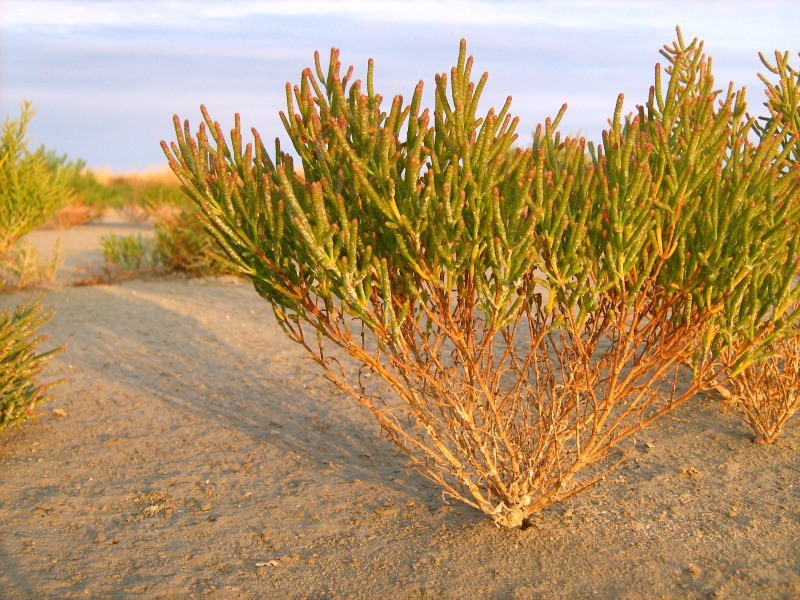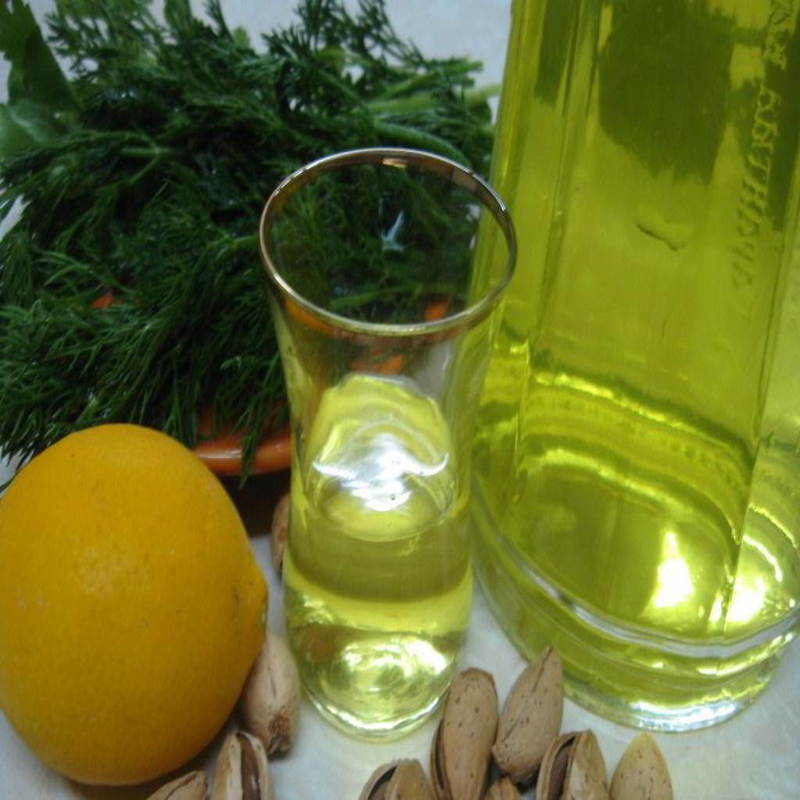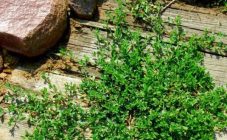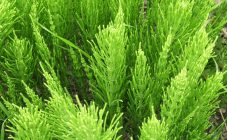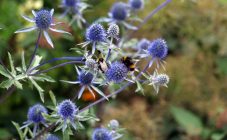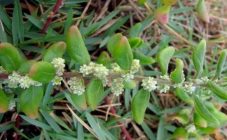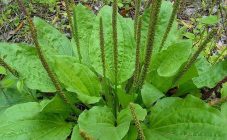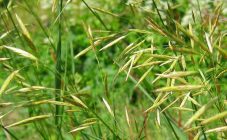Content:
Soleros is an amazing plant that can grow and develop well on salt marshes. It looks like a bare green knotty stem. In addition to its unusual appearance, it is also valued for its healing properties. Some types of this herb are listed in the Red Book.
Description of culture
European salicornia (salicornia europaea) is an annual plant of the genus Salicornia belonging to the Amaranth family. There are various names for it: biryugon, mokredinnik, salt-grass, salt lick, salt grass, herbaceous omentum, hodgepodge, yalgu, solaris, salt marsh. Its healing properties have been known for a long time.
Soleros is a herb with a bare, articulated stem, with opposite branches. The leaves are almost invisible. Plant height within 30 cm, color - from green to reddish. There are specimens reaching a length of 45 cm. Flowers are sunk into the tissue of the stem and form spike-shaped inflorescences at the ends. The perianth is whole, has the shape of a rhombus, it has an opening at the top, in which the stigma and 2 stamens are visible. Salicornia fruit is an ovoid nut with hairs in the upper part. Saline grass blooms in late summer from July to September.
Soleros is widespread in Eurasia, including in Russia on the coast of the Baltic Sea, southern Siberia, the Far East, and the Caucasus. Found in Egypt and Morocco.
Both the roots and stems of the saltmarsh grass contain the alkaloids saligerpine and salicornin. Flavonoids were also found in the roots, and in the aerial part of the plant - choline betaine, flobafen, ascorbic acid, anthocyanin, beta-cyanidin, sucrose, tannins, oxalates, resin and fatty acids, soluble sulfate salts of potassium, sodium, magnesium, chloride and carbonate sodium, bromide, magnesium iodide.
Plant varieties, how it multiplies, on what soils it grows
The genus Salleros has about 35 species. European - the most famous of them, eaten, common in North-Western Europe. Poyarkova saltwort is found in Northern Norway, in Southeast and Eastern Europe, as well as in Siberia, salinewort grows. In the Gulf of Mexico, on the Atlantic coast of the United States, you can find Bigelov's saltros. Prostrate soleros is common in Africa, Central Europe and the Mediterranean.
Solaris grass prefers wet salt marshes, sea coasts, shores of salt rivers and lakes, salt crusts. It can also be found on saline deposits, at an altitude of 3.9 km above sea level.
Propagated by seeds. It forms quite extensive thickets, but it can grow alone.
The properties of the culture, how is the plant useful, the effect on humans
The aerial part of the grass is eaten during the flowering period. In some regions, it is a fairly common food, the plant is added to soups and salads or cooked with butter.The herb Salleros is also used for medicinal purposes.
The herb of European Salicornia is suitable for medicinal use due to its many medicinal properties. Leaves, stems and flowers are collected. Salleros herb has found application in folk medicine. A decoction is prepared from it, which is used as:
- laxative;
- gastric;
- antiscorbutic;
- diuretic;
- anti-inflammatory;
- tonic.
In the Krasnoyarsk Territory, a vodka herbal tincture of saltwort is popular, which must be rubbed into the joints as an anti-inflammatory, analgesic agent for gout and rheumatism.
Recently, traditional medicine has become interested in the grass solonetz. The possibility of using it in oncology is being considered.
There are many recipes for healing salicornia herb.
Vodka tincture from dry and fresh raw materials
100 g of dry grass is placed in a glass container and poured into 0.5 liters of vodka. After that you need to shake the solution and close it tightly. The mixture is allowed to brew for a week at a temperature of + 20 ... + 25 ° C. Then the solution is filtered.
The tincture is actively rubbed with limbs with sore joints for 15 minutes a day before bedtime. Inside, the agent is taken 15 drops a day before meals, 2 times. Compresses are made from tincture of saltwort, which relieve inflammation. This procedure is carried out at night. The gauze is soaked in the solution and applied to the problem area. From above it is necessary to wrap the compress with a woolen scarf or scarf. This course of treatment is carried out for 2-3 weeks.
Fresh grass Salicornia is also used to make vodka tincture. This is not at all difficult - the torn off parts of the plant are well washed and scrolled in a meat grinder. The resulting gruel is filtered through cheesecloth, separating the cake from the juice. Then the liquid is mixed with vodka in a 1: 1 ratio. The remedy should be infused within a week. Precipitation is possible, which does not affect the quality of the tincture.
Decoction for diseases of the kidneys and genitourinary system
It is necessary to take an enamel container and dilute there a teaspoon of salicornia in a glass of hot water. Then the resulting mixture is covered with a lid and kept in a water bath for 15 minutes. Then they are removed from the heat, cooled to room temperature and filtered. The resulting broth is stored in the refrigerator for no more than two days. Should be taken in 2 tbsp. spoons 3 times a day 1 hour before meals.
The tincture of the herb salt, like any drug, has contraindications. These include:
- pregnancy and lactation;
- stomach diseases in the acute stage - ulcer, gastritis, enterocolitis;
- hypertension;
- predisposition to the formation of kidney stones, bladder;
- individual intolerance.
To find out for sure whether it is possible to use products based on the herb Salleros, you need to consult your doctor.
What diseases and pests are
The pest is found in the south of the European part of Russia, in Moldova, in the Ukraine, the Caucasus, in Central Asia, in the Near and Middle East. Caterpillars do damage. One generation of an insect develops on average 1.5-2 months. The time boundaries of generations are blurred and during the summer you can meet all stages of insect development at the same time.
When can you collect grass, how to dry and store
The greatest healing effect of the herb Salicornia is in late summer and early autumn. Its green color changes to a crimson red, and inflorescences form on the stems. Local residents, from areas where salicornia grows, believe that dense stems draw out all the minerals and elements that are used in mud therapy from the soil. Thus, the herb carries with it all the benefits of medicinal salts.
When the stems are dry, they are laid out in jars or cloth bags and stored in a cool dry place. Raw materials are crushed, so that later it is more convenient to measure the required amount. Used throughout the year as needed.
Saline grass combines many amazing properties, and its appearance is remembered for a long time. Thick green stems, turning purple as they mature, look quite impressive. This is another proof that in any, even the most severe conditions, there are animals and plants that can survive there. Soleros is an adornment for soils with a high salt content.
